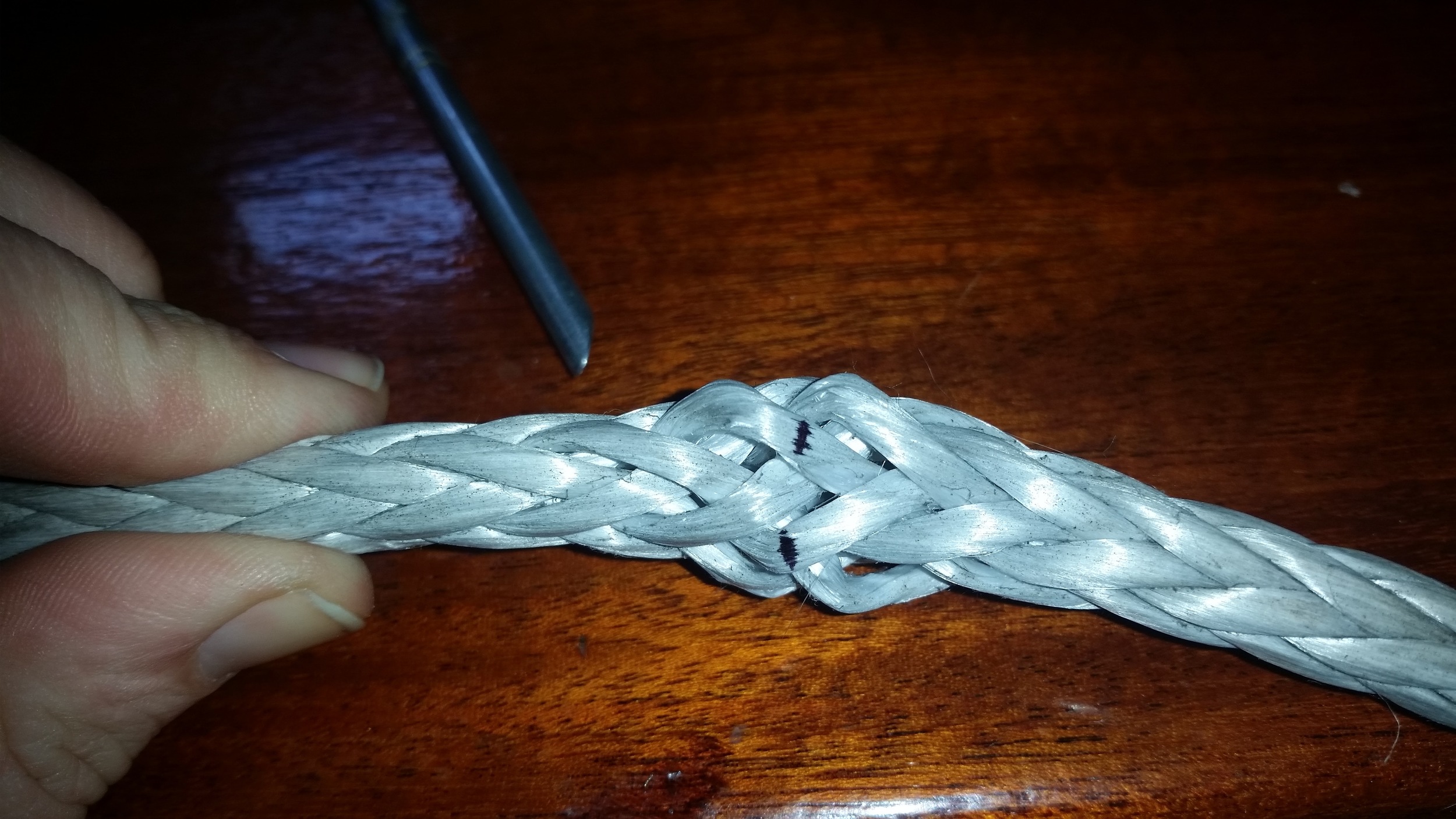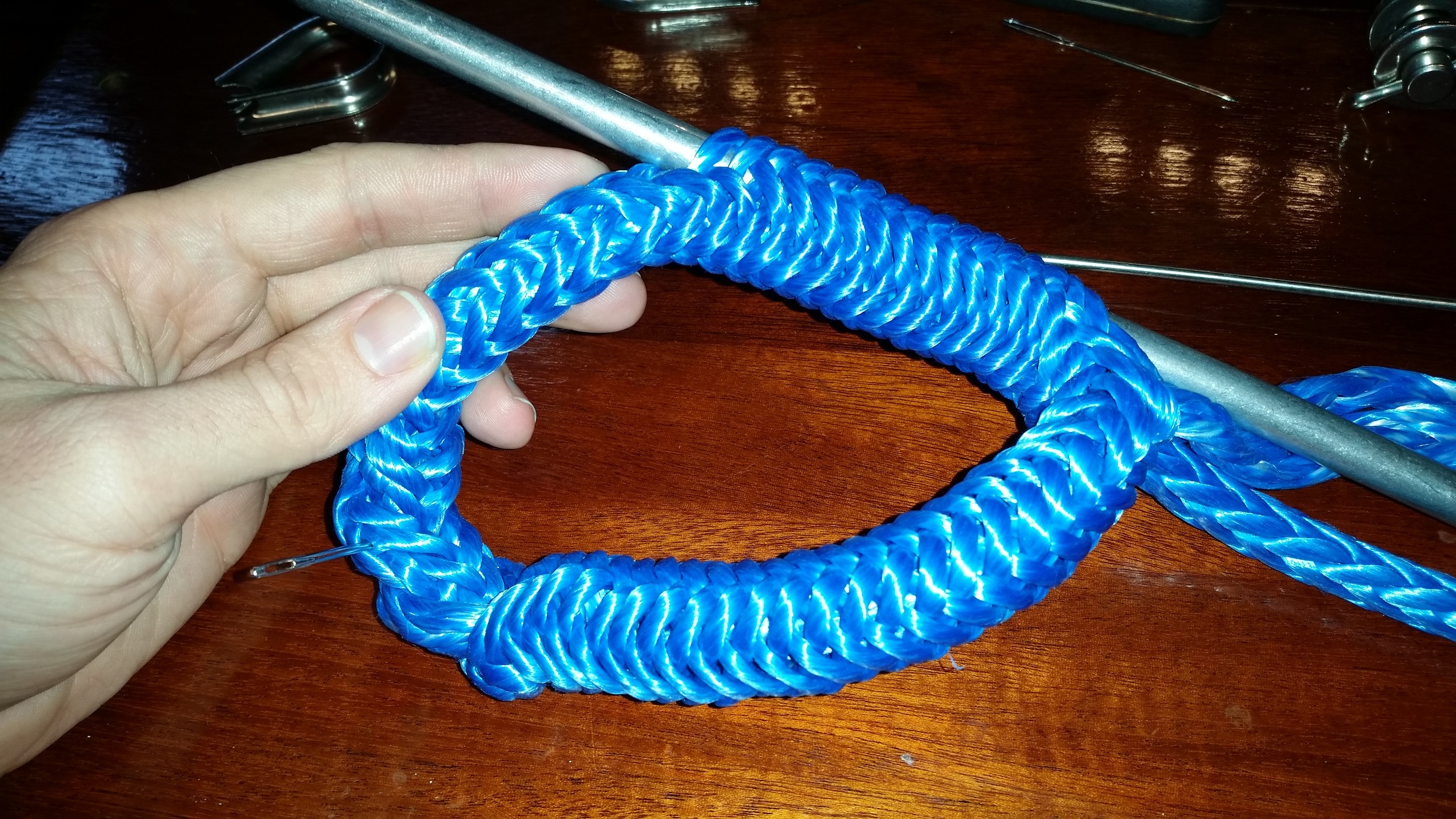The mast may appear stiff and rigid, but it is best to think of it as a wet noodle! In order to get a wet noodle to stand up straight, you need to support it at different points along its length.
Even though the stays pull down, it is best to think of them as "support points".
The top of the mast is "supported" by the cap shrouds.
The middle of the mast is "supported" by the spreaders and the lowers.
The bottom of the mast is "supported" by the mast step.
The more support points a mast has, the less strength the mast needs on its own; which translates into the ability to use a much lighter and thinner mast. The longer the span between support points, the stronger the mast needs to be. This is the reasoning behind double spreader rigs (2 support points in the middle) over single spreader rigs (1 support point in the middle). As you go adding more and more spreaders, you go adding more and more support (and complexity)! This allows the rig to be taller without adding much more weight.
One advantage of a keel stepped mast over a deck stepped mast is the keel stepped mast gets one more support point: the deck. As the mast passes through the hole in the deck, it is firmly connected to the deck structure; providing an additional support point and making the whole rig considerably stronger.
A keel stepped single spreader rig is as supported as a deck stepped double spreader rig, but without all the added complexity of intermediate stays. Less complexity directly relates to less to go wrong when underway.
Traditionally, the mast firmly connects to the deck is via wooden mast wedges. Nowadays, all sorts of contraptions exist to take the place of wood. I have seen starboard wedges, goo that solidifies (spartite), and countless of other inventions. While advancements in technology are great, it's important to understand why wood was used in the first place.
Wood wedges will hold in place and not slip out due to the high amounts of friction present in the space available. The cellular structure of the wood will crush if the load is too great, protecting the mast. The wood will greatly increase the pressure pushing on the mast to ensure that it is very snug!
Starboard wedges are made of polyethylene, the same stuff used to make dyneema. It is very strong and will not rot. This sounds like an excellent quality to have in a mast wedge! They are also rather hard and if they do dent or bend from an extreme load (the mast crushing down on them) they will not bounce back once the pressure is released. Wood will crush down like plastic wedges will, but it will also swell back up with the addition of moisture.
Spartite will offer a complete seal around the mast, preventing water from intruding (something wood can't offer) but it provides no pressure to the mast. It is also a nightmare to pull the mast! The spartite will not let go and can turn a complicated situation into a desperate situation. Mind you that the yacht owner is paying the crane by the hour to unstep the mast. If it takes a lot of more time due to the spartite, the owner will have to pay the crane for that additional time.
While wood doesn't provide leak protection, this can be remedied with a mast boot.
When wedging, regardless of the wedge material, it is important to take various precautions. The sides of the mast are actually much weaker than the rounded sections. If you place a narrow wedge in the middle of the side of the mast side and drive it home into the deck, you can very easily buckle the side of the mast! Avoid this issue by using broad wedges on the side with much less tension as you drive them in with a mallet.
On the curved sections (front and back) of the mast, narrow wedges are preferred as they can be tightly packed to provide maximum support the mast/deck partner junction.
When you are done, it should look like a nice ring of wooden wedges running around the mast as it goes through the deck.
When you cut your wedges, it is best to make the bottom too thin and slowly taper up to too wide. This way the wedge will slide into place and gradually apply pressure to a large section of the mast. If the taper is too great, the wedge will not be able to go in far enough and the support will act more as a pressure point instead of a pressure area.
If a wedge gets stuck before you can drive it home, try to remove it and plane the side a bit to allow it to pass all the way. If you can't get it out, try chiseling some off a corner to loosen it. If that doesn't work, you can go inside and tap the wedge out from the bottom. If you got the wedge close to home but it got stuck a bit early and you can't get it out, you can cut the top off to make it line up with the other wedges so it will fit under the boot. Just be sure the neighboring wedges are perfect to avoid too much pressure in one area.
I would caution away from using a saw to cut the top off a wedge in place, instead use a mallet and chisel. I score the bottom side of the wood, then chop down from the top, splitting the wood along its grain. The split will stop as soon as it reaches the score line. I repeat this process over and over until the top is trimmed off.
The last point to consider is what wood to use for wedges? As you may know, not all woods are created equal. The mast/deck partner is going to live under a boot, exposed to condensation a moisture from leaks, along with poor airflow. This adds up to a dark, moist area with stagnate air which is a breeding ground for rot! This is why it is very important to use a rot resistant wood, such as white oak.
When you buy your piece of lumber, make sure that it is white oak and not red oak. Red oak will rot away in a few weeks in this environment, where white oak will last a long time! Also try to get a rift saw plank, that way your wedges will have their rings oriented so that they run parallel to the mast. This way the pressure from the mast will simply compress the wood instead of splitting the wedges.
I replaced my wedges because I noticed that the mast was shimming around at the deck. When we would ride up a wave, it would scoot back. When we would come down the wave, it would scoot forward. This instantly became a top priority for my winter projects list.
The old wedges were long leaf pine, which is also rot resistant (I even reused some of the wedges), but you can see there simply were not enough of them in there to support the mast. Two of the wedges had fallen through the deck partner and were sitting down by the step. Two other wedges were completely loose, held in place by tape. You shouldn't use tape to hold them in, you should use pressure.
After wedging the whole mast, you can see how it is important to look under the boot to see what is really going on in there rather than assuming that it is all in order. Next time you inspect your deck partner, you will know what to look for to evaluate if it needs a little sprucing up or not.








































































